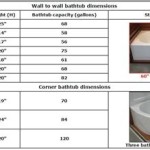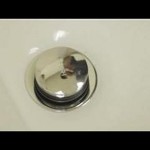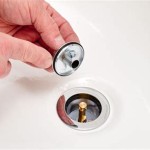Best Cleaner For Bathtub Grout Stains
Bathtub grout, the porous material filling the spaces between tiles, is particularly susceptible to staining and discoloration. This susceptibility stems from its composition and the environment it inhabits. Grout often contains cement, which is porous and readily absorbs moisture, soap scum, minerals from hard water, and organic matter. The warm, humid environment of a bathroom exacerbates the problem, creating an ideal breeding ground for mold and mildew. These factors contribute to the development of unsightly stains that can be challenging to remove.
Numerous cleaning products are marketed as solutions for stained bathtub grout. These range from commercially available solutions to homemade remedies. The effectiveness of each option varies depending on the nature and severity of the stain, the type of grout, and the cleaning technique employed. Consideration must be given to potential damage to the grout and surrounding tile when selecting a cleaning product and method. In some cases, aggressive cleaning can erode the grout, leading to further problems.
The selection of the "best" cleaner for bathtub grout stains depends on a variety of factors. There is no single product that is universally effective for all types of grout and all types of stains. A systematic approach is recommended, starting with gentler cleaning methods and progressing to more aggressive solutions only if necessary. Understanding the composition of the grout and the nature of the stain are crucial for choosing the appropriate cleaning agent.
Understanding Grout Composition and Stain Types
Grout is typically composed of cement, sand, and polymers. Different grout types exist, including sanded grout (used for wider grout lines) and unsanded grout (used for narrower grout lines, often with polished tiles). Epoxy grout is a more resilient, non-porous option, but it is less common in residential bathrooms due to its higher cost and more complex installation. The type of grout significantly influences its susceptibility to staining and the appropriate cleaning methods.
Stains encountered in bathtub grout can be broadly categorized as organic or inorganic. Organic stains are often caused by mold, mildew, soap scum, and body oils. These stains appear as dark spots or discoloration, often black, green, or pink. Inorganic stains typically originate from hard water deposits (calcium and magnesium) or rust. Hard water stains present as a white or grayish film, while rust stains are characterized by their reddish-brown coloration.
Identifying the type of stain is crucial for selecting the appropriate cleaning agent. Organic stains respond well to cleaners with bleaching or antimicrobial properties, while inorganic stains are better addressed with acidic cleaners. Using the wrong type of cleaner can be ineffective and potentially damaging to the grout or surrounding tile.
Effective Commercial Grout Cleaners
A multitude of commercial grout cleaners are available, each with varying strengths and formulations. These cleaners often contain a combination of surfactants, solvents, and bleaching agents to remove stains and disinfect the grout. When selecting a commercial cleaner, it is advisable to read the product label carefully and follow the manufacturer's instructions. Testing the cleaner on an inconspicuous area of the grout is recommended to ensure it does not cause discoloration or damage.
Chlorine bleach-based cleaners are effective for removing mold and mildew stains. However, chlorine bleach can be harsh and may discolor or damage certain types of grout and tile. Furthermore, chlorine bleach releases toxic fumes when mixed with ammonia or acidic cleaners. Proper ventilation is essential when using chlorine bleach-based cleaners.
Oxygen bleach-based cleaners are a gentler alternative to chlorine bleach. These cleaners are effective for removing organic stains without the harsh fumes and potential for discoloration associated with chlorine bleach. Oxygen bleach cleaners typically require a longer dwell time to effectively penetrate and remove stains.
Acidic grout cleaners are designed to dissolve mineral deposits and rust stains. These cleaners often contain hydrochloric acid, phosphoric acid, or citric acid. Acidic cleaners can etch or damage certain types of tile, such as marble or limestone. They should be used with caution and only on acid-resistant surfaces.
Enzyme-based cleaners are a more environmentally friendly option for removing organic stains. These cleaners contain enzymes that break down organic matter, such as soap scum and body oils. Enzyme-based cleaners are generally safe for use on most types of grout and tile, but they may require a longer dwell time and multiple applications to achieve desired results.
DIY Grout Cleaning Solutions
Several do-it-yourself (DIY) grout cleaning solutions can be effective for removing mild to moderate stains. These solutions offer a cost-effective and often less harsh alternative to commercial cleaners. However, it is important to exercise caution and test the solution on an inconspicuous area before applying it to the entire surface.
Baking soda and vinegar is a popular DIY grout cleaning solution. Baking soda is a mild abrasive that helps to loosen dirt and grime, while vinegar is a mild acid that can dissolve mineral deposits and soap scum. To use this solution, create a paste of baking soda and water, apply it to the grout, and then spray with vinegar. Allow the mixture to fizz for a few minutes before scrubbing with a brush and rinsing with water.
Hydrogen peroxide is another effective DIY grout cleaner, particularly for removing mold and mildew stains. Hydrogen peroxide is a mild bleaching agent that can kill mold and mildew spores and lighten stains. Apply hydrogen peroxide directly to the grout, let it sit for 10-15 minutes, and then scrub with a brush and rinse with water.
Lemon juice, due to its citric acid content, can also be used to clean grout. It works best on hard water stains and mild soap scum. Apply lemon juice to the grout, let it sit for a few minutes, scrub with a brush, and then rinse with water. The acidity of lemon juice can harm certain surfaces; therefore, testing is vital.
A paste made from Borax and water can provide a mild abrasive action that is effective for removing various types of grout stains. Apply the paste to the grout, let it sit for several minutes, scrub, and rinse thoroughly. Borax is a relatively mild cleaner, but it should still be used with caution, especially around pets and children.
Cleaning Techniques and Tools
Regardless of the cleaning product chosen, the cleaning technique and tools employed play a significant role in the effectiveness of the cleaning process. Proper scrubbing and rinsing are essential for removing stains and preventing residue buildup.
A stiff-bristled brush, such as a toothbrush or grout brush, is ideal for scrubbing grout lines. These brushes allow for targeted cleaning and effective removal of dirt and grime from the porous grout surface. Avoid using abrasive brushes or pads that can scratch or damage the grout and surrounding tile.
Steam cleaners can also be used to clean grout. The high-temperature steam loosens dirt and grime, making it easier to remove stains. Steam cleaners are particularly effective for removing mold and mildew, as the heat kills the spores. It is important to follow the manufacturer's instructions and use appropriate safety precautions when operating a steam cleaner.
After scrubbing the grout, it is essential to rinse thoroughly with clean water. This removes any remaining cleaning product and prevents residue buildup, which can attract dirt and contribute to future staining. Using a sponge or cloth to wipe down the grout after rinsing ensures that all cleaning product is removed.
Proper ventilation is crucial when cleaning grout, especially when using chemical cleaners. Open windows and doors to allow for fresh air circulation. Wearing gloves and eye protection is also recommended to protect skin and eyes from irritating chemicals.
For particularly stubborn stains, multiple applications of the cleaning product may be necessary. Allowing the cleaner to dwell on the grout for a longer period can also improve its effectiveness. However, it is essential to avoid allowing the cleaner to dry completely, as this can make it more difficult to remove.
In cases where the grout is severely stained or damaged, professional grout cleaning services may be necessary. Professional cleaners have access to specialized equipment and cleaning solutions that can effectively remove even the most stubborn stains. They can also repair or replace damaged grout, restoring the appearance of the bathtub.
Preventive measures are crucial in maintaining clean bathtub grout. Regularly wiping down the grout after showering helps to remove soap scum and prevent the buildup of stains. Addressing leaks promptly to prevent water damage and mold growth is also important. Sealing the grout can provide a protective barrier against moisture and stains.

How To Clean Bathroom Tile And Grout Reviews By Wirecutter

10 Best Shower Cleaners Of 2025 Reviewed

How To Clean Grout On Floor Tiles Showers Oxiclean

How To Clean A Bathtub And Sink Reviews By Wirecutter

11 Best Shower Cleaners Tested Reviewed Nbc Select

Bathroom Spray Cleaner For Shower Tub And Tile Oxiclean

Zep 32 Oz Shower Tub And Tile Cleaner Zustt32pf

11 Best Shower Cleaners Tested Reviewed Nbc Select

How To Clean A Bathtub And Sink Reviews By Wirecutter
10 Best Grout Cleaners To Get Your Bathroom Sparkling
Related Posts








